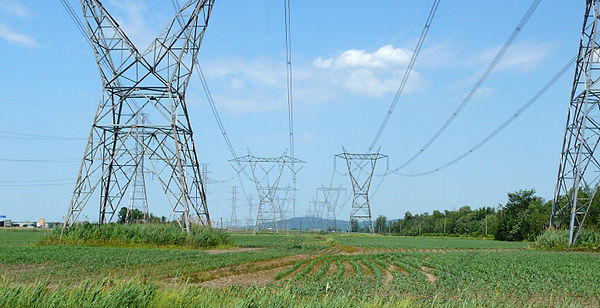Text
“Betty” or “The Betties” (plural) as a slang term to refer to high-power transmission towers (450 to 735 kV).
Context
JH is a 53 year-old woman from Erie, Pennsylvania. She grew up on the rural edges of an industrial city. The high-tension wires from the towers went over the property of her childhood home, and there was a power station nearby.
“The Betties were along the highway, not far from where we lived,” JH said. “They were the shape of a woman. They were wider at the top, like an hourglass. My dad called them Betties.”
JH said she always understood, even as a child, that they were called Betties because of their shape. “We would drive down the road, and I would think that [the towers] looked like my dolls, like a dolls’ dress,” she said. “I learned later that Betty is slang for a hot woman.”
“That’s Californian surfer talk,” her husband, KH, interjects. “My understanding is that the origin was from the Flintstones. Betty Rubble was the attractive wife.”
Analysis
This single slang word for an inanimate object communicates a lot about the construction of gendered aesthetics and the social ideal of a woman’s body type. The expectation that women have an hourglass-shaped body — along with the assumption that such a shape is natural — has contributed to body dysmorphia and the proliferation of voluntary or involuntary body modifications for women, from corsets to BBLs. These constrictions support patriarchal oppression of women by constricting their movement. Additionally, body dysmorphia is linked to increased instances of mental illness.
I also find it interesting that this term was taught to JH by her father. The role that girls’ own fathers play in their gender construction is significant and markedly different from their mothers’. JH’s experience implies that fathers may be complicit in the objectification of their own daughters through the seemingly unrelated objectification of an inanimate object.
Again, the fact that so much can be contained in a single word referring to an inanimate object speaks to the pervasiveness of gender constructs. The objectification that this enacts uniquely upon women is proved by the lack of a male nickname for transmission towers of lower voltage, which take on a capital t shape. A connection could be made to men’s broad shoulders (again, a cultural construct and not an innate physical quality) but no such slang term appears. If such a term does exist, further study could examine the ‘equal’ objectification of male and female body types.

